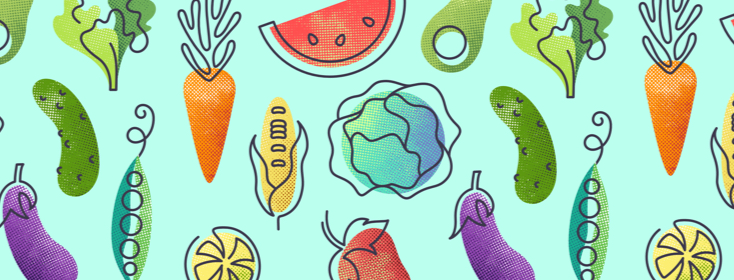Tips for Picking Produce
Recently, a fellow contributor asked for a few tips on how to pick produce. When shopping for fresh produce, what are some of the tell-tale signs a fruit or vegetable is ready to eat?
There have been a handful of occasions in which I have cut into a piece of produce all but to discover it to be unripe and likely unpalatable.
The 2015 to 2020 Dietary Guidelines recommend that fruits and vegetables make up half of our meals and snacks.1 I can’t help but wonder; do we fall short of this goal because we are ill prepared to select quality produce?
How to select fresh fruits and vegetables?
In this article, I will provide a few tips on selecting fresh fruits and vegetables.
Artichokes
- When ripe, artichokes should feel heavy and be rounded. The leaves should be green and tightly closed.2
Asparagus
- Look for asparagus that are straight, firm and stalks that are fully green.2
Avocado
- When ripe, an avocado should give when gently squeezed and the skin will also be fully black.4
- Ripen an unripe avocado by storing it a room temperature in a paper bag.2
Corn
- Ripe ears of corn will have green husks (outer covering of corn) with soft silk ends. When the husk is pulled back the kernels should look plump.2
Eggplant
- A ripe eggplant will look glossy, have a green cap, be firm and feel heavy for its size.2
Kiwi
- Similar to an avocado, a ripe kiwi should give when gently squeezed.2
Melons (cantaloupe, honeydew, watermelon)
- The stem of a melon should be withered (or detached) when ripe. Smell melon for a melon/perfume-like sent. Knock on the melon with your knuckles, a ripe melon will sound similar to the sound of pounding (gently) on your chest. Melons, when ripe, will also be heavy for their size.2,3,4
- Ripen an unripe cantaloupe or honeydew melon by storing it at room temperature.2
Peaches, pears and plums
- When ripe, peaches, pears, and plums should be slightly firm, but give when gently squeezed.2
- Ripen peaches and pears by storing them at room temperature in a paper bag.2
- Ripen plums by storing at room temperature.2
Zucchini
- Zucchini, when ripe, should feel heavy for its size, feel smooth, and be a bright color (color will depend on the variety of zucchini).2
Additional Tips:
- Select fruits and vegetables that are in season
- Ask the produce manager for guidance
- Purchase produce at a local farmers’ market
- Review the USDA Seasonal Produce Guide:
- Where is the produce from?
- Ask the produce manager how far the produce travels. If it is coming fom a nearby location, it is more likely to be ripe and ready to enjoy.
- Purchase frozen produce
- Reduce the risk of spoilage and lessen the amount of waste
- Save money
- Frozen produce is packaged when “fruits and vegetables are at their peak”5
- Organic produce may have a shorter-shelf life6
- Organic produce may have a shorter shelf life as is does not use conventional pesticides or fertilizers. Purchase a small quantity to help minimize waste.
- Consider using a produce delivery service
- This is a great way to try new fruits and vegetables and lessen the time spent grocery shopping.
- A few places to consider:
- Farmbox Direct
- Farm Fresh To You
- Hungry Harvest
This article represents the opinions, thoughts, and experiences of the author; none of this content has been paid for by any advertiser. The Type2Diabetes.com team does not recommend or endorse any products or treatments discussed herein. Learn more about how we maintain editorial integrity here.

Join the conversation